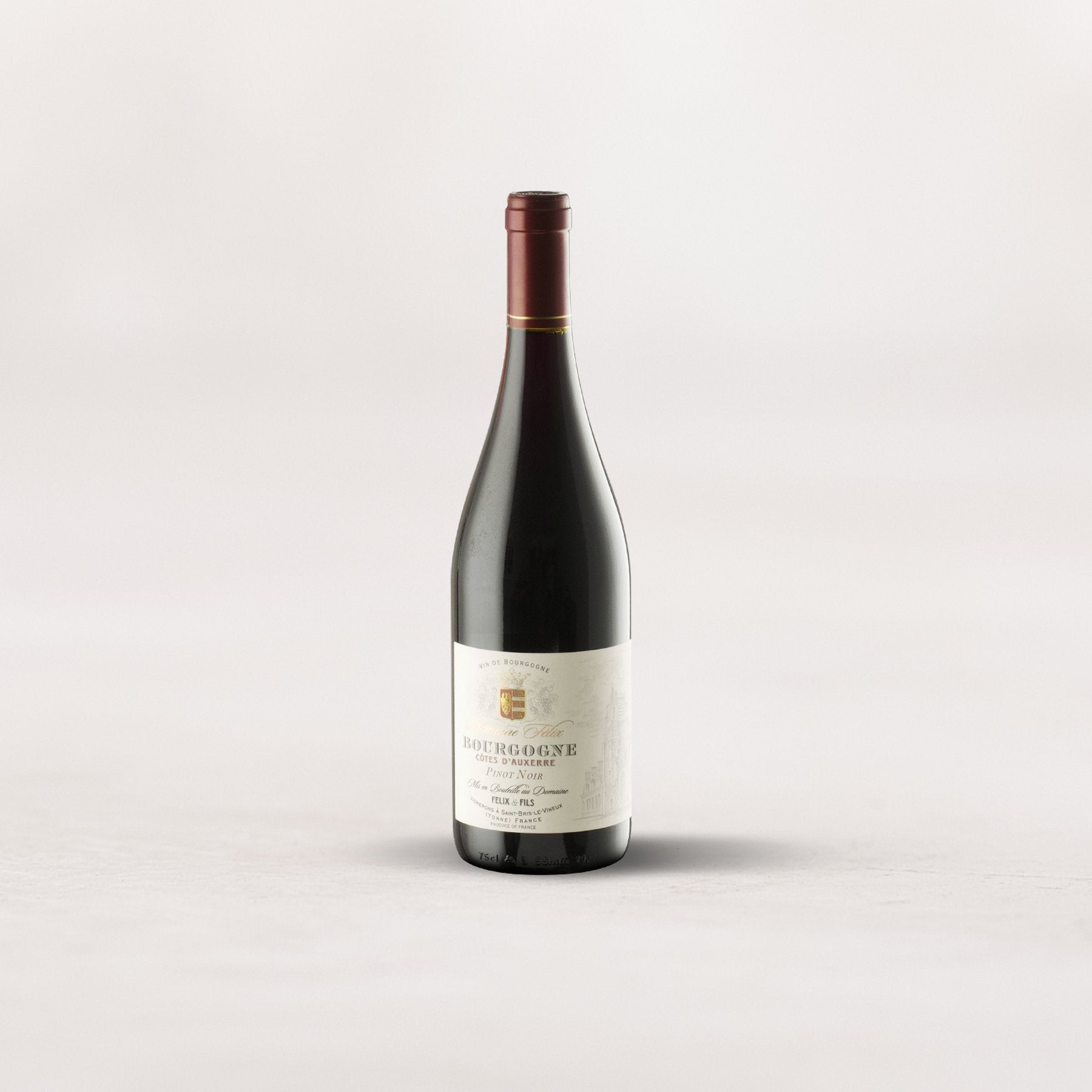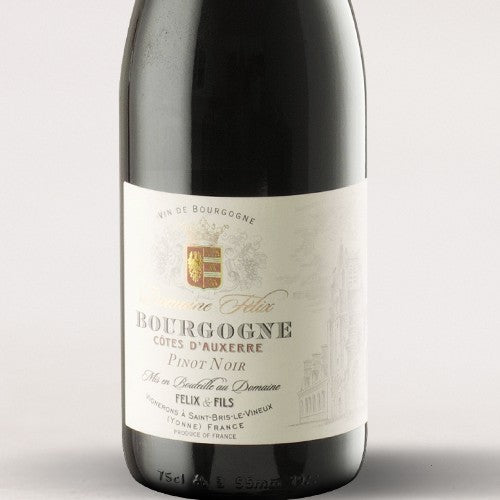After the runaway success of the previous vintage of this wine, it was a no-brainer to wave in the new release of Domaine Félix’s stunningly good Pinot Noir—riper vintage, same amazingly low price, great story…what’s there to think about? If that “Côtes d’Auxerre” designation has you reaching for your most trusted Burgundy book, let me get ahead of that: This appellation is a good two hours northwest of Burgundy’s Côte d’Or, in the Yonne River valley, among a cluster of appellations that includes Chablis, Irancy, and Saint-Bris.
Côtes d’Auxerre is a spotty patchwork running north-south along rolling hillsides and slopes at varying altitudes, and historically, these sites remained too cold and often produced wines lacking ripeness, with unforgiving acidity. This meant that white grapes, mostly Chardonnay but also Sauvignon Blanc and Aligoté, were highly preferred and widely planted. But things have changed dramatically the past two decades! With the same limestone-rich soils as the much pricier Côte d’Or vineyards, Pinot Noir now has all the sun and warmth needed to produce world-class wines that, for now, offer Burgundy lovers some of the best bang-for-the-buck on the market. It must be experienced to be believed!
Domaine Félix, a family estate dating all the way back to 1690, is headquartered in the village of Saint Bris Le Vineux, about 16 kilometers west of Chablis. The estate’s dimensions remained essentially unchanged for centuries (about 11 hectares of vines), but in the ’90s and 2000s, new acquisitions grew the Félix family holdings to 32 hectares. Their farming methodology is described as lutte raisonée (“reasoned fight”), which calls for organic practices except in emergency circumstances. For most of their history this estate was lauded for its zesty, mineral white wines, especially its Saint-Bris, the only appellation in Burgundy that is 100% Sauvignon Blanc. But the increasingly warm summer temperatures have brought renewed focus to their red wines, and the blockbuster 2019 vintage solidified the potential for Pinot Noir in this underappreciated corner of Burgundy.
Grapes for this cuvée are hand-harvested and completely de-stemmed before fermentation in temperature-controlled stainless steel vats. Aging is carried out in new and used French oak barrels, and while it may have been austere when it was first released (evidently it was), it has blossomed into a beauty after some bottle age. While most domaines have already rolled out their 2021 Bourgognes, the 2019 Félix is ready to rock. Shining a bright, reflective ruby red in the glass, it is a perfumed and heady style, with aromas of black cherry, black raspberry, red currant, violet, warm spice, and underbrush. It is medium-bodied and thrumming with energy, its tannins subdued and its texture silky. Decant it 20-30 minutes for best results, and serve it at 60 degrees in Burgundy stems. French classics like coq au vin are a no-brainer with this wine, but during the warmer months it is also a perfect pairing for slow smoked beef ribs or grilled lamb kabobs. Given the tremendous value, you should grab a case and make this your house Pinot for the summer and fall.











